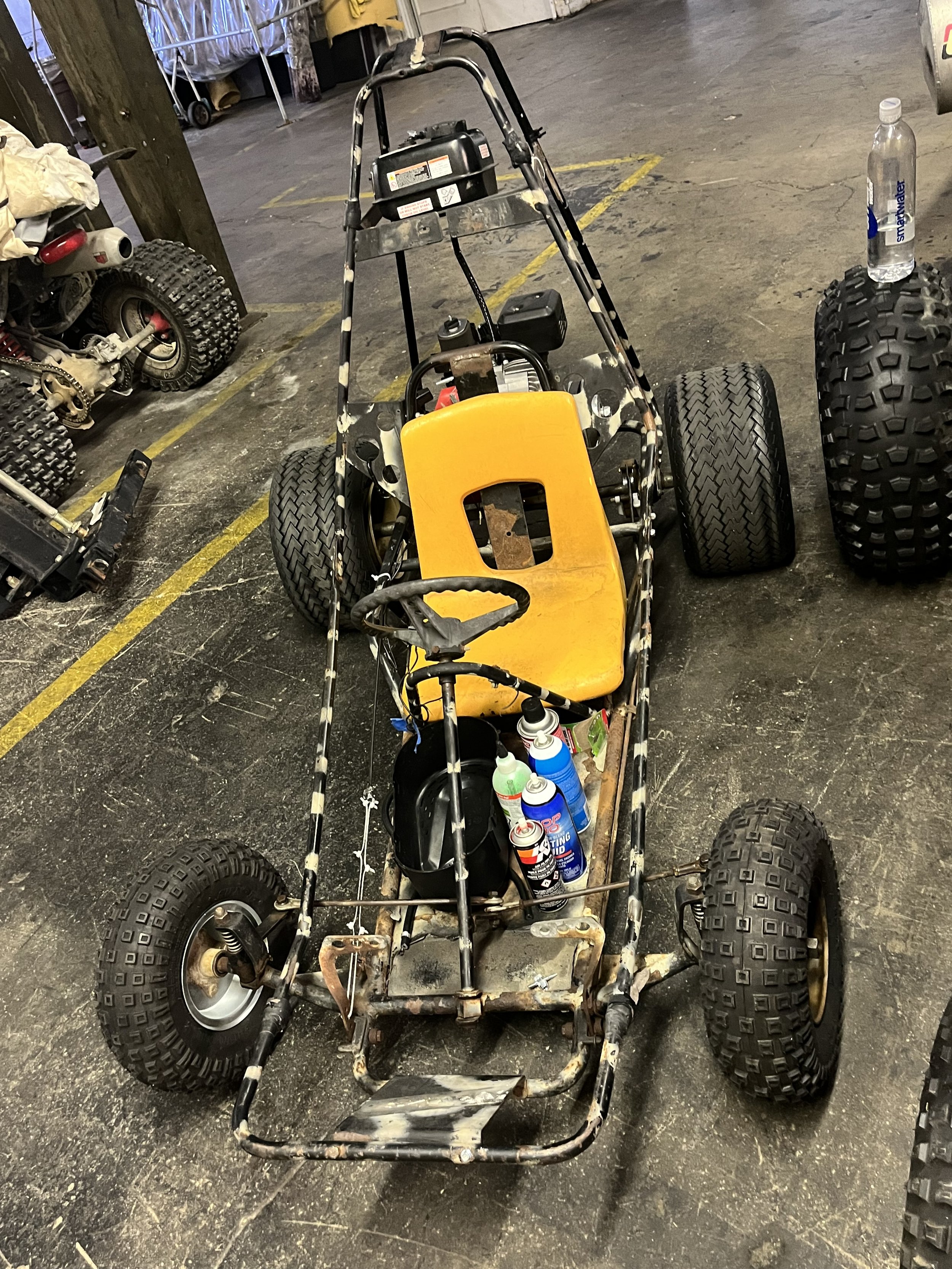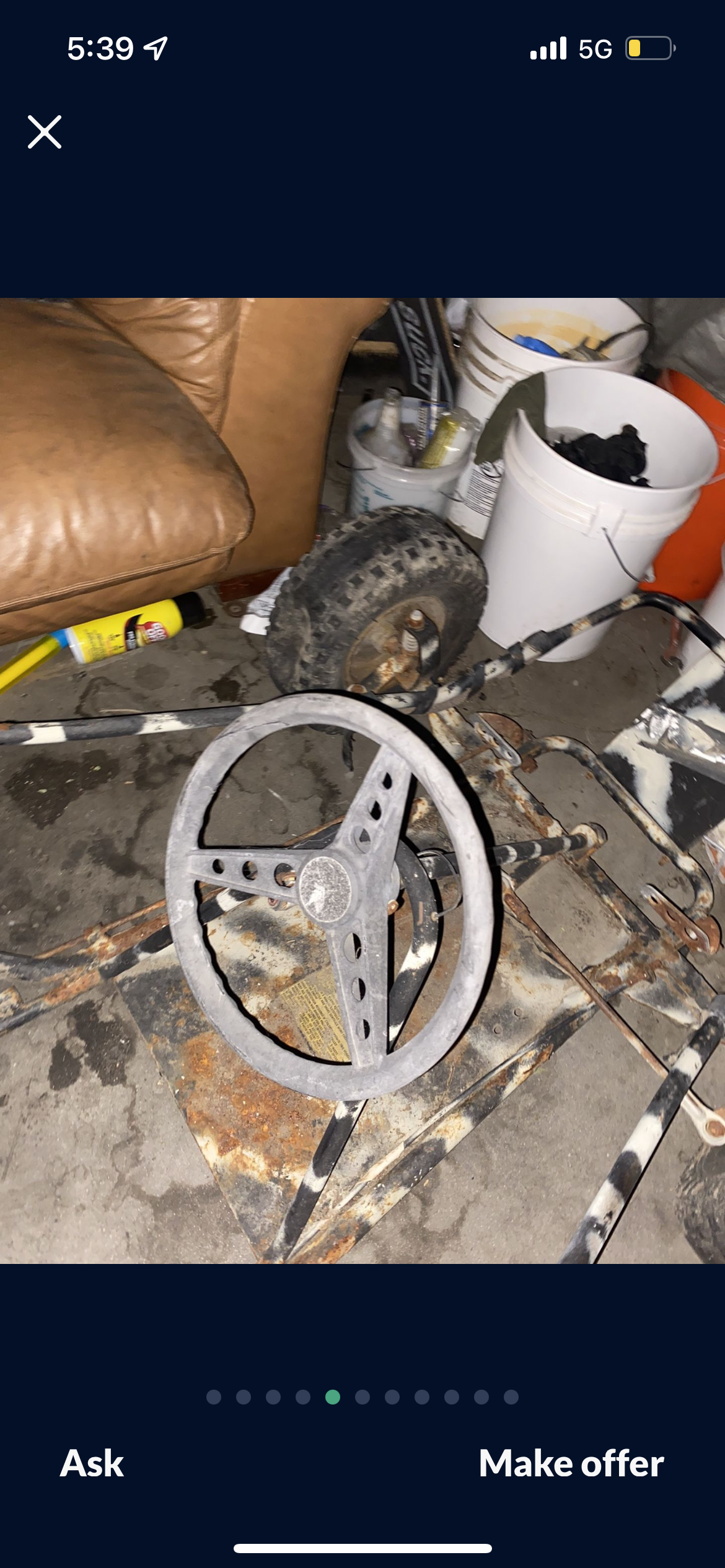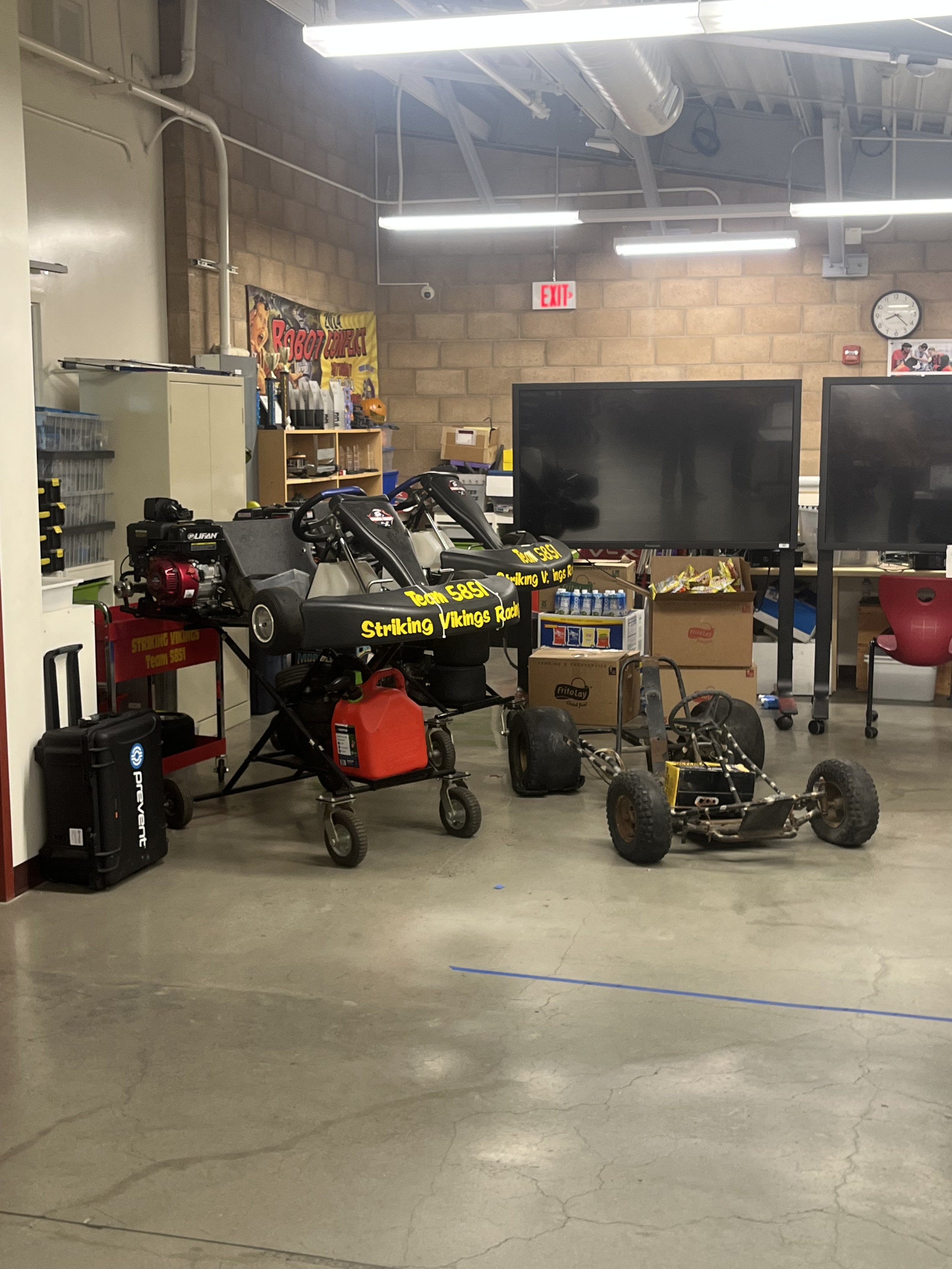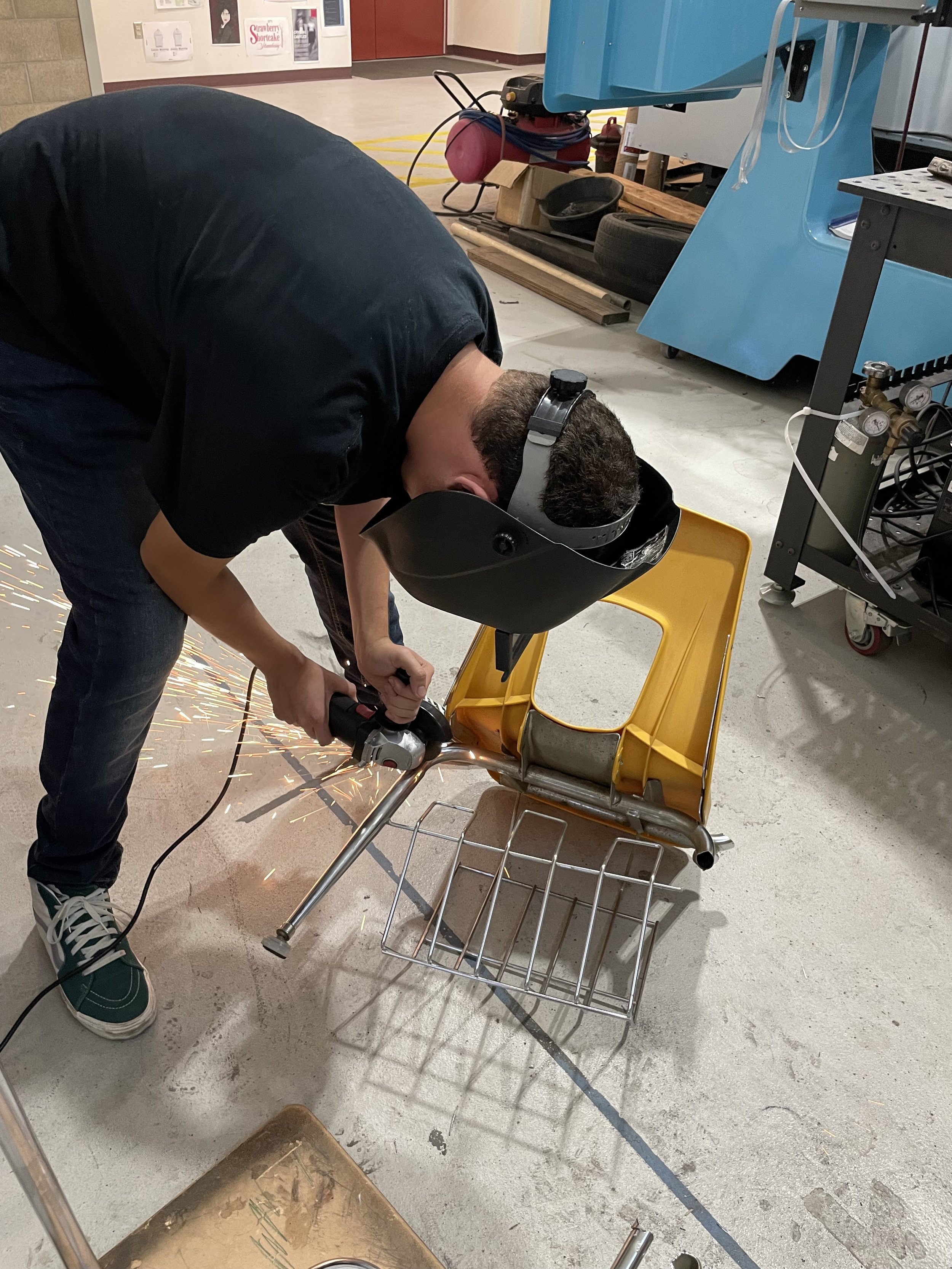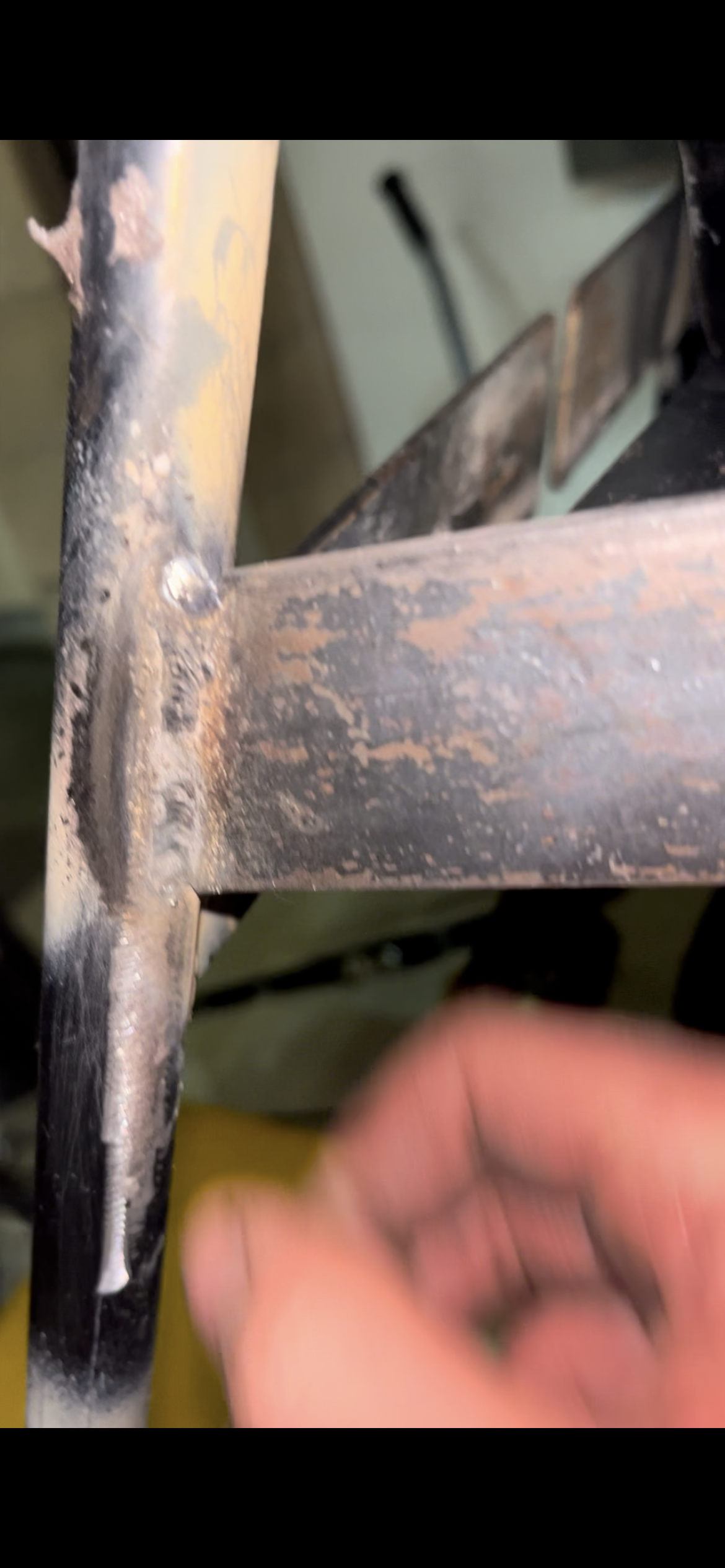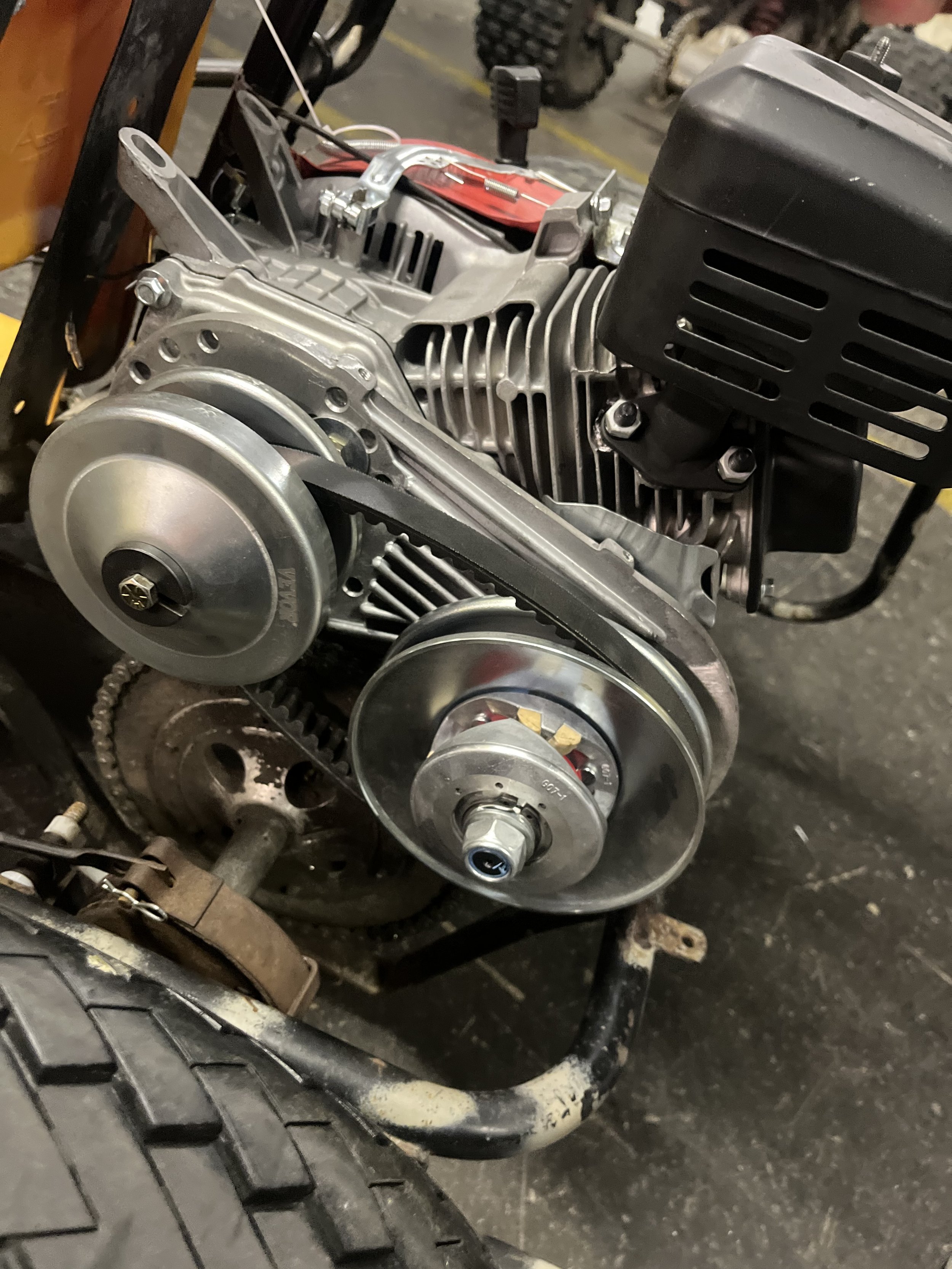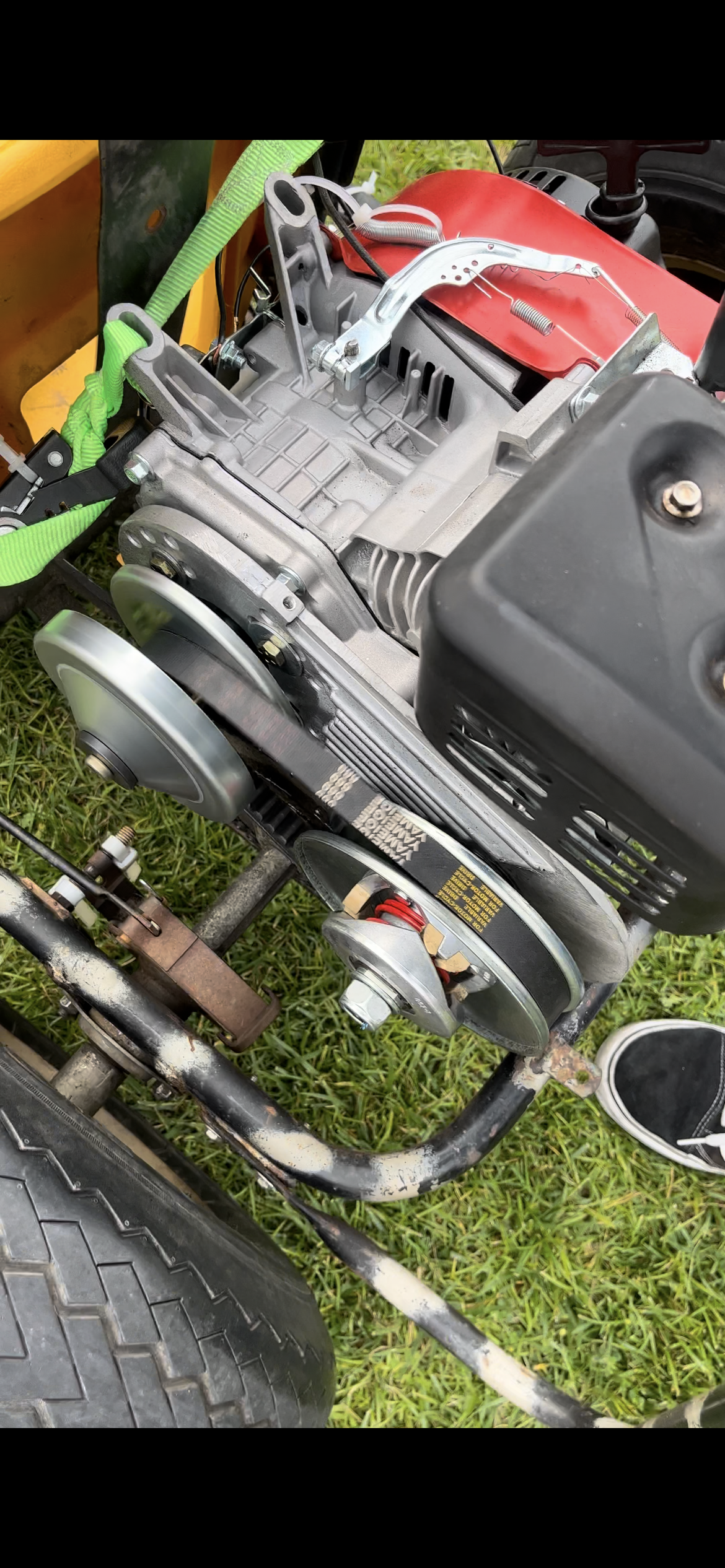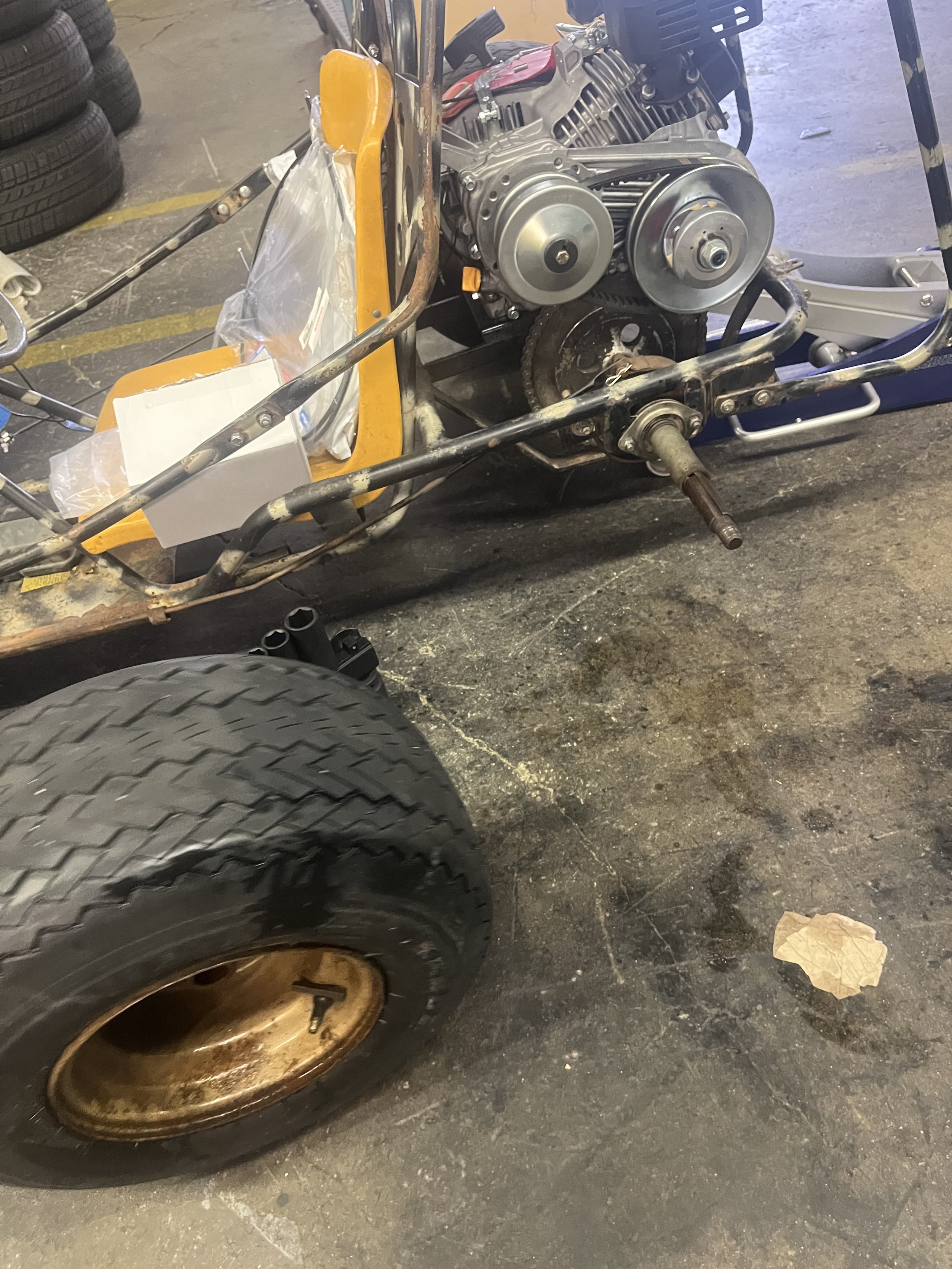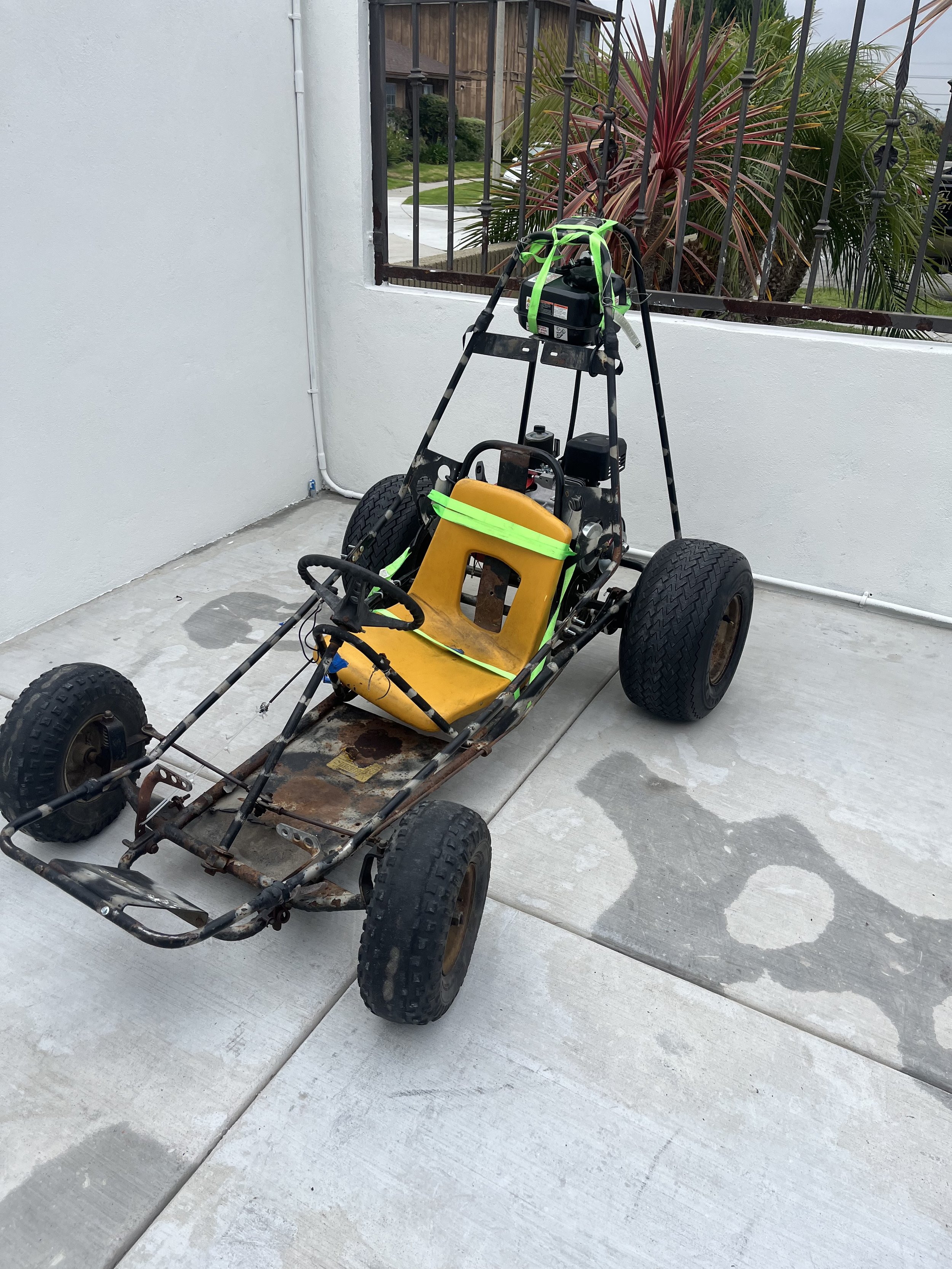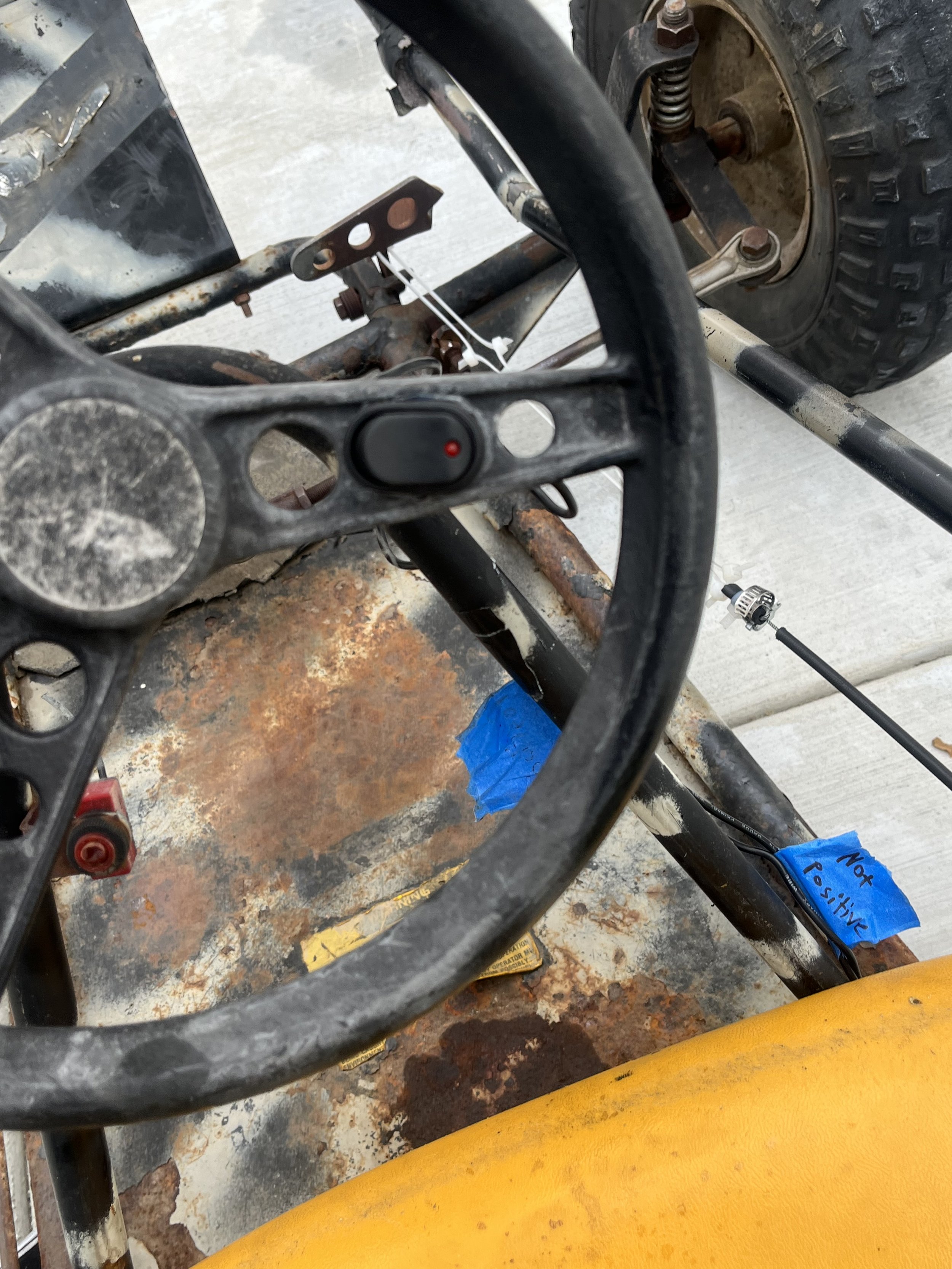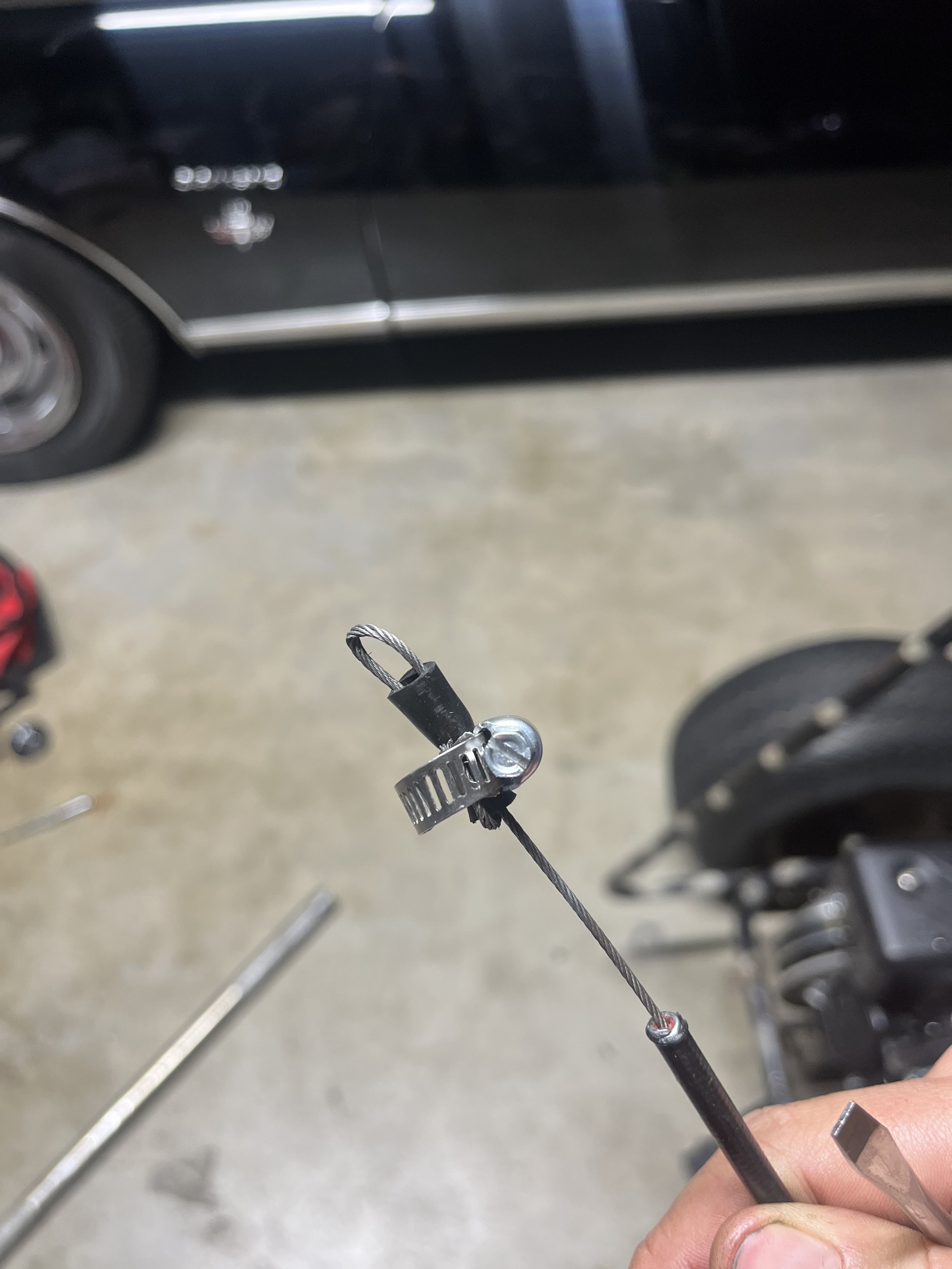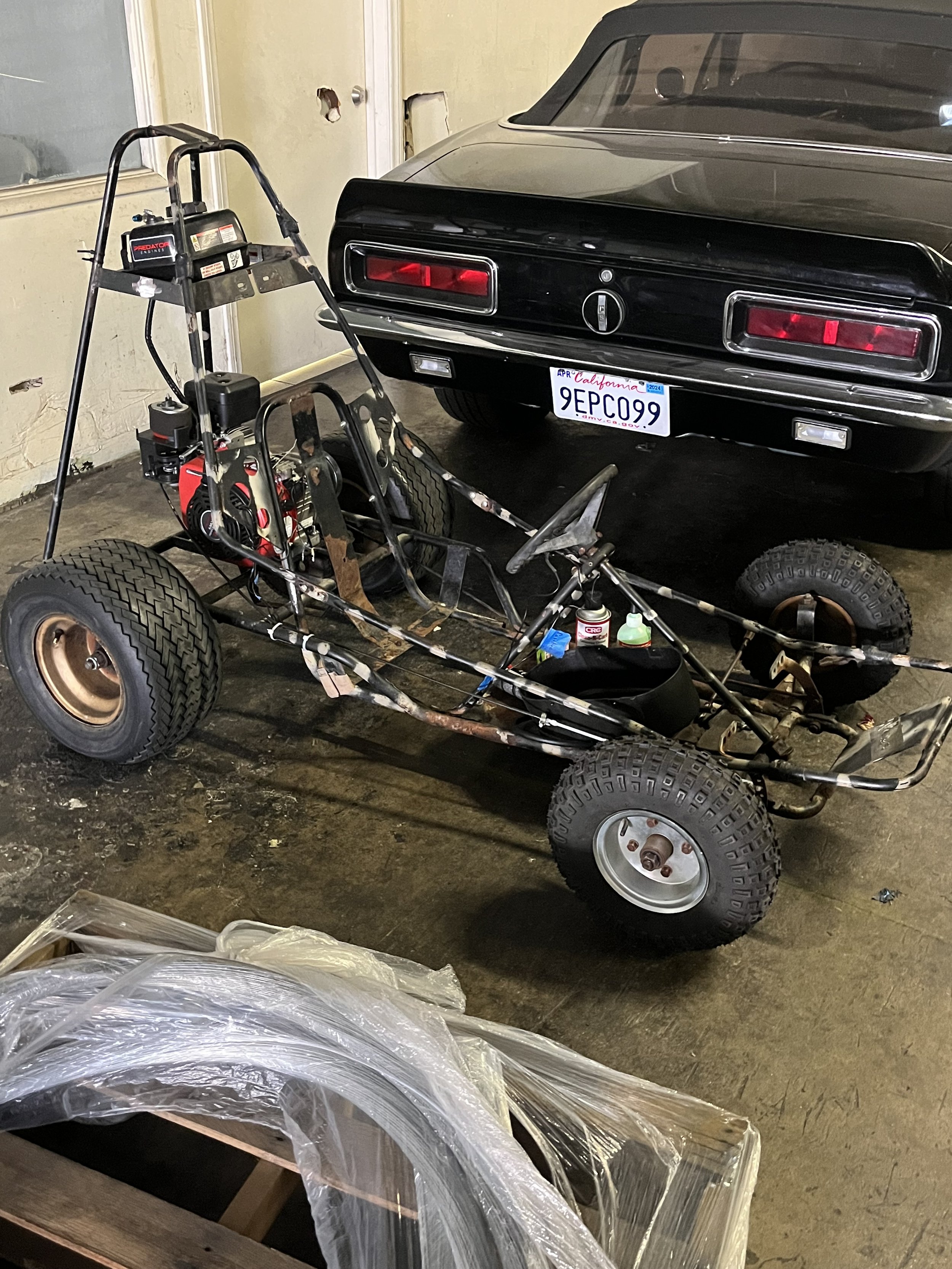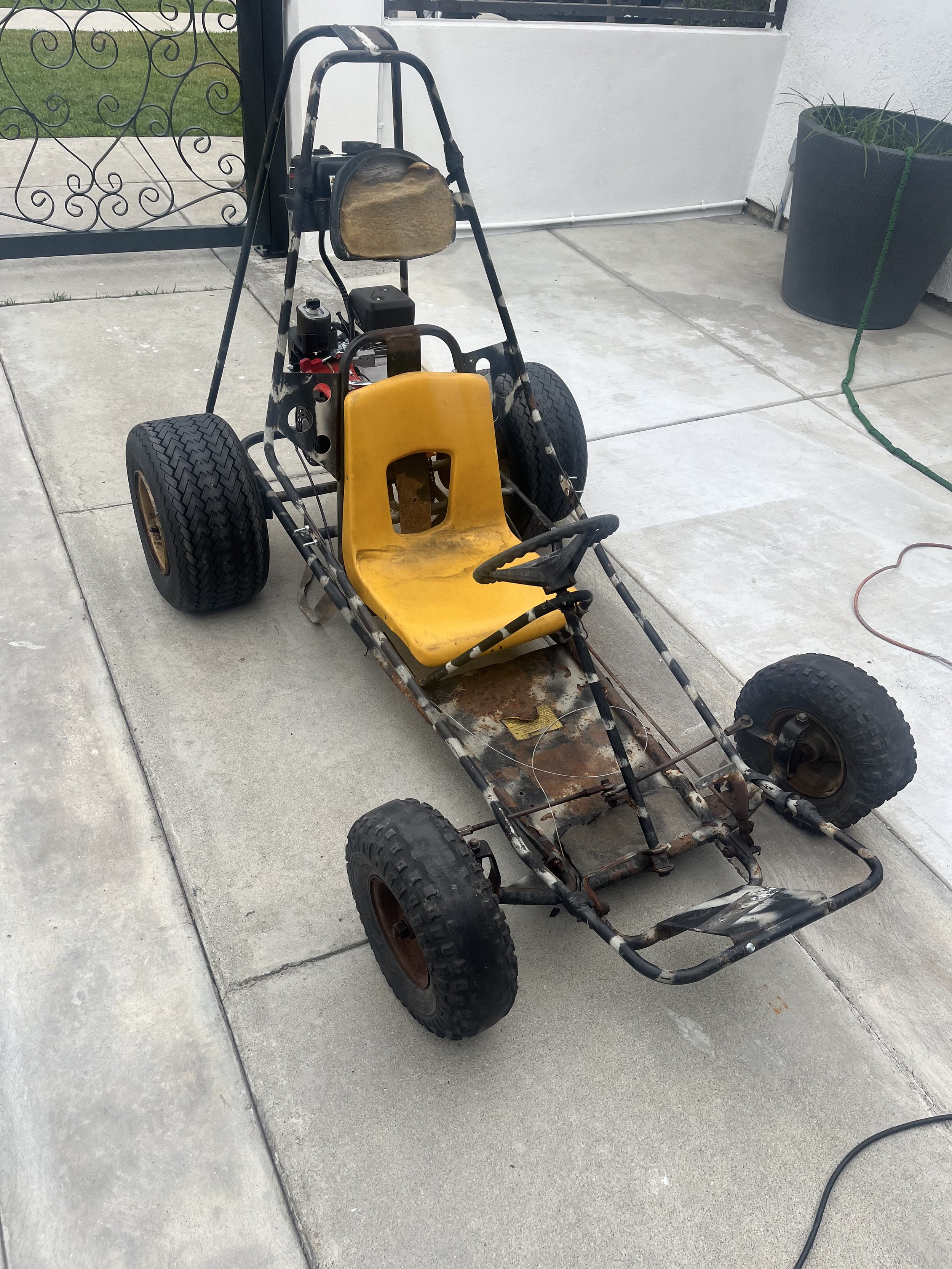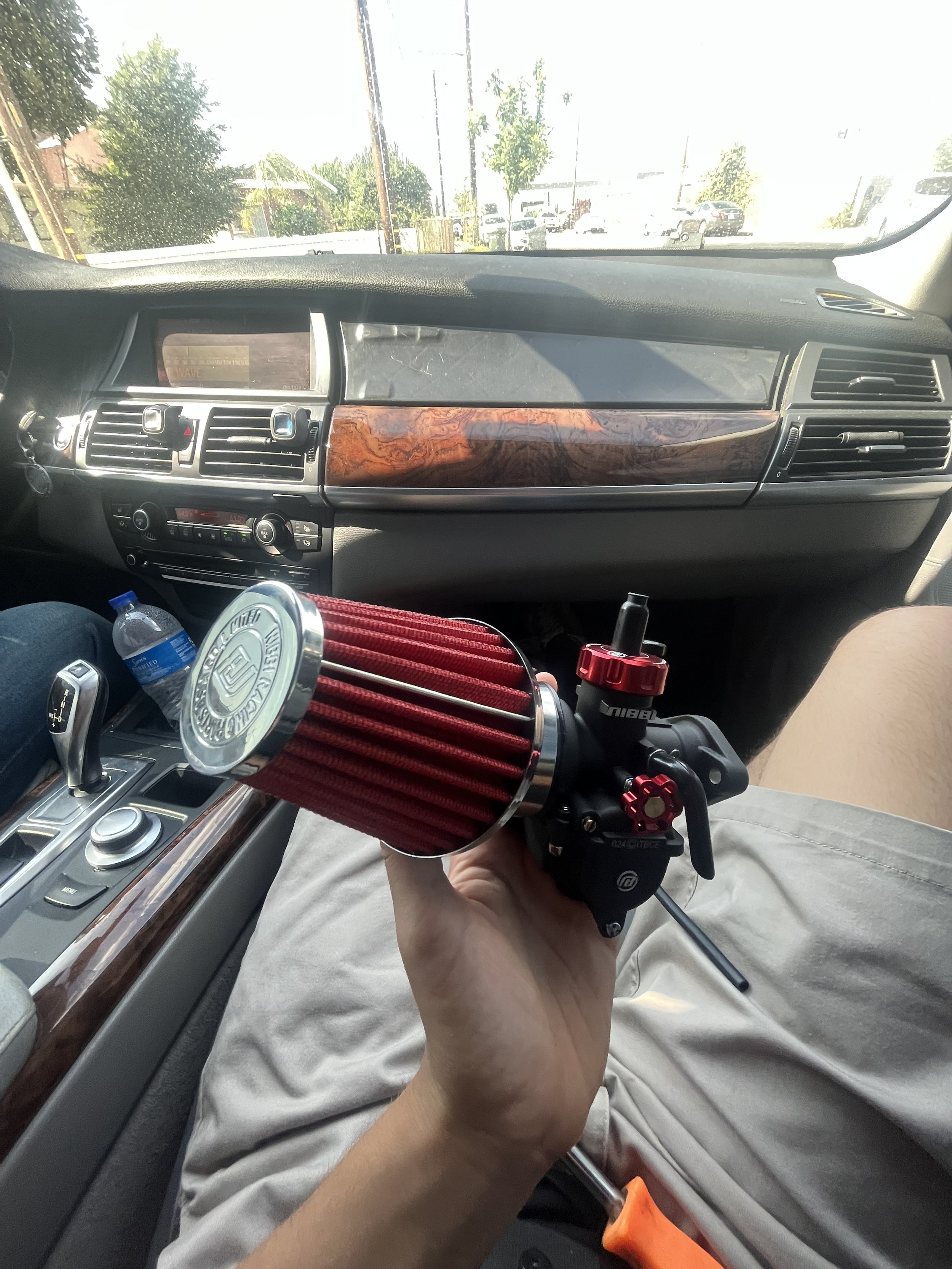The “No-Kart”
My original “No-Kart” began as a ratty 80’s Manco Dingo frame that I found for sale locally. Despite not missing too much, every single wear (and non wear) component was either damaged or worn to the point of needing to be replaced.
I started by stripping the frame completely in order to see just how compromised the 30 year old tube frame was (luckily a few welds fixed that issue). It then became apparent that a new engine had to be sourced for it, as the original was no longer being produced (nor was it any good according to several forums). I settled on a 212cc OHV unit from a local Harbor freight which fit the original engine mount with only slight grinding. In addition to this, I opted for a knockoff comet CVT unit in order to best utilize the little power the engine produced (which later helped me in SAE when it came to CVT tuning in college).
Since an aftermarket engine had been retrofitted to the original chassis, certain components did not integrate well. An example of this would be the gas tank which would collide with the rear of the seat support (which was structural to the frame). This forced me to fabricate a tank mount, which actually ended up serving as a roll bar brace (this actually had to be redesigned due to the welds not penetrating the tubing). In addition to this, I also had the chance to mount an ergonomic kill switch in the steering wheel and learn the wiring that came with it.
Despite not having originally built this machine, I have seen it’s workings inside and out, and gained an understanding as to why certain things on it were designed the way they were. In addition to this, I exposed myself to a plethora of concepts which would later (now) help me such as CVT tuning, the effects of gearing on a drive unit, and general fabrication (this is what I learned to first weld on).
Despite taking the backseat to bigger projects as of now, future plans involve modifying the engine (governor delete/carburetor), disk brakes, tubular seat mount and reinforcing the chassis with several 1x.120 steel tubes in key structural locations.
